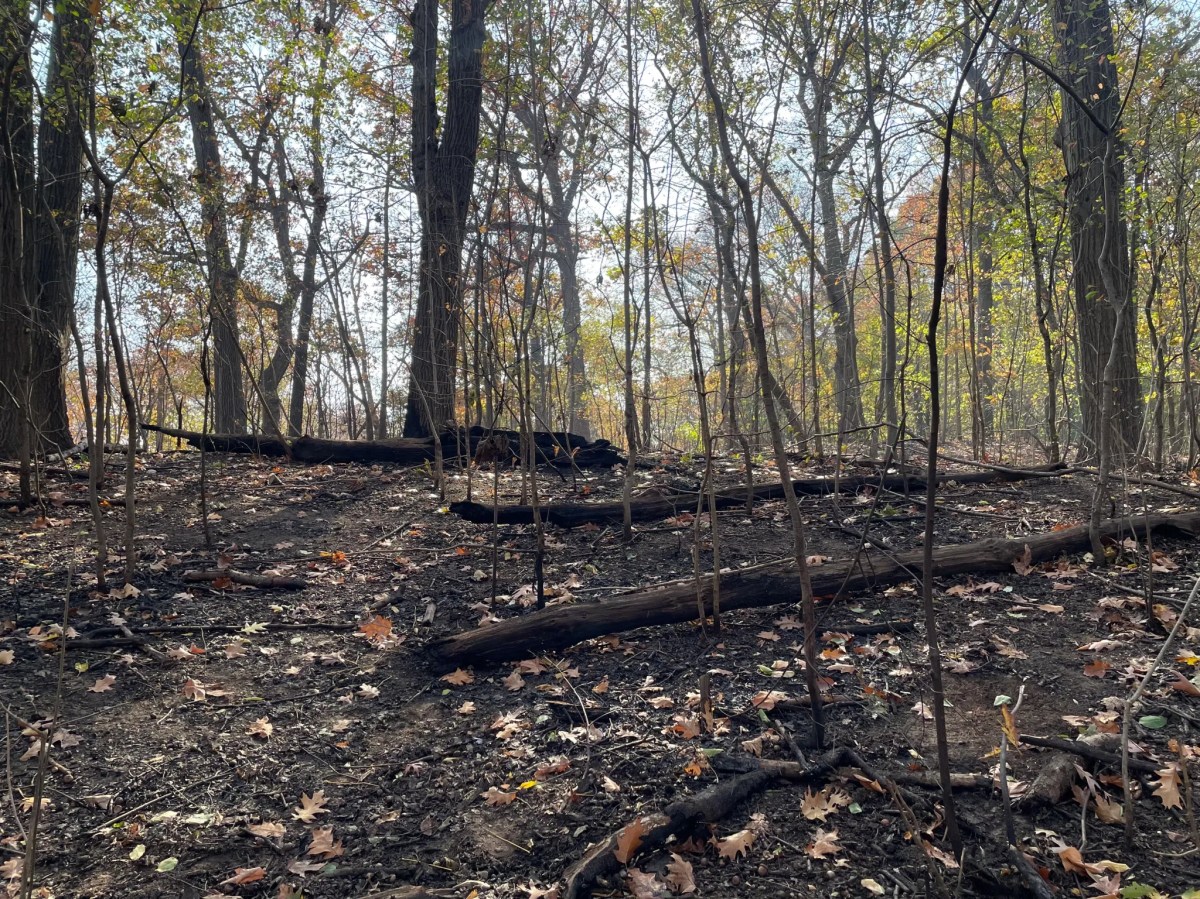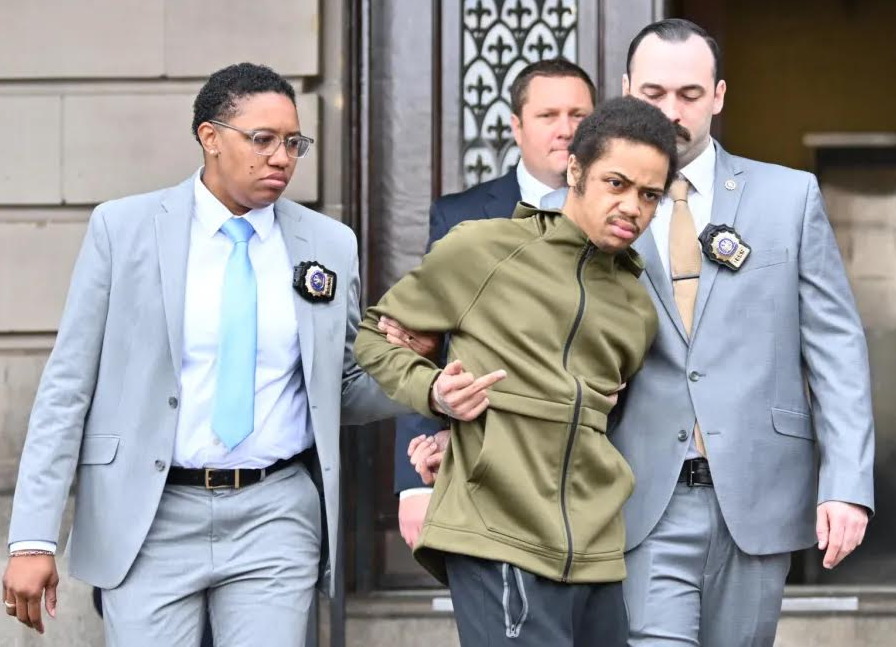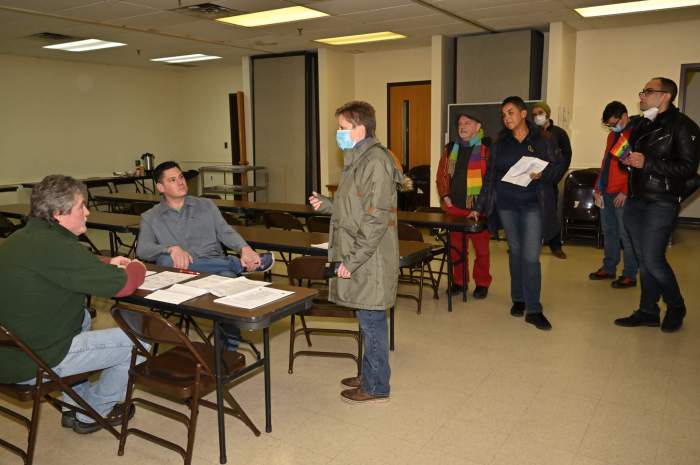By Tim Gay
Stephen Wyler was a friend of mine for more than 21 years. He died on May 18 at age 64, of complications from pancreatic cancer. It was ironic, because for all the time I knew him, and for many years before that, Steve lived with H.I.V. He wasn’t a complainer, and he never pitied himself or labeled himself a “survivor.” Rather, Steve lived each day with a simple and direct joy of life — sun, exercise, companionship with a dog or a cat, a long walk, a movie, good food, a call to friends, some reading, looking at an article in The New Yorker, some television and a good night’s sleep.
There were three lives that Steve had. First, he was the oldest son of Ukrainian-American parents, raised in post-war Detroit, when the city was booming with cars. Steve’s father was a General Motors employee. His mother never learned how to drive, but she took her children by bus to movies and shows in downtown Detroit. Steve developed a love of theater and often staged productions at home with his little sister playing the heroine, dying as she fell down the stairs.
Perhaps that led to the second part of Steve’s life. While in college in Milwaukee in the mid-’60s, Steve tried out for summer stock theater, and never went back to campus. His first boss was a young producer director from Texas named Tommy Tune, who later went on to Broadway fame. After that, Steve found himself in St. Louis, at the Muni, working chorus line, stand-in and boy roles for a host of Broadway and Hollywood actors on tour. Steve told me his favorites actress from that time was Jane Powell and the show was “The Boyfriend.”
In 1969 Steve came to the Big Apple, and within a few years became a fashion model. In one month he was featured in two ads in GQ. He was seen in Cosmopolitan in a full fur coat. Among the photographers Steve modeled for was Bruce Weber, who later became famous for his black-and-white fashion photography, including the Calvin Klein ads and photography books of athletes.
As the city went bankrupt in the ’70s, artistic expression and gay liberation exploded. Rents were cheap and a young man could be a waiter until closing time, and then dance with the stars in the discos and clubs until dawn. A swimsuit, a knapsack and a train ticket were all you needed for a weekend in the Hamptons or Fire Island. Any night could lead to a punk rock show, a disco or a party with Andy Warhol. And Steve had a million stories about that golden era.
Steve had a small role in the Jane Fonda and Donald Sutherland film “Klute,” which was filmed in New York. He appeared in Off Broadway and Off Off Broadway shows. Sometime in the 1970s Steve was represented by the theatrical agent Michael Hartig, which began Steve’s longest role, as on-again-off-again guy Friday at the Hartig Agency, until Michael Hartig’s death in 2004.
That led to the third act of Steve’s life — sobriety, living with H.I.V. and helping others.
I met Steve in 1989 or 1990 at a church on W. 16th St. Steve was telling a large group of guys what it was like for him before he stopped drinking. Steve said that over a 15-year period he went from being fabulous to unemployable to homeless. He climbed into an abandoned building on the Lower East Side just to find a place to sleep. I’ll always remember what Steve said of his first night as a squatter: “And I heard soft footsteps, and then whispers from people, and someone said, ‘I think he’s a new one.’”
When Steve bottomed out, he went home to Michigan, where he received support and encouragement from family and friends to accept his alcoholism and move on in life. Steve actually went to work at a GM plant for a time, and saved his money to return to New York and pick up his career.
But that was not to be. Steve’s higher power had a different idea. Steve found out he was H.I.V. positive sometime in the ’80s. Instead of a death sentence, it became a reason for Steve to live a full happy life.
Steve continued to study acting and appeared in readings, Off Broadway and community shows — even when he could no longer speak clearly due to small strokes possibly related to his H.I.V. status. In fact, Steve continued classes at HB Studios through the spring of 2010.
In 1990, Steve and I didn’t have any Thanksgiving plans, so we decided to do a turkey and a ham for a group of eight friends. Steve did all the cooking back then. That event was so successful, we decided to do it again the next year. And then the next. And last year was the 21st anniversary of Steve’s and my Thanksgiving dinner. Sometimes there would be eight, sometimes 16, once there were 28, and always there was more than enough food.
As the years went by, others took over the cooking. Newly sober guys would peel potatoes. Someone would be encouraged to go ahead and bake a pie using his grandma’s secret recipe. Steve was always guaranteed the turkey carcass and the ham bone for soups. And the motto was, “No one leaves this house alive without leftovers.”
Also around 1990, Steve and I realized that weekends were kind of lonely for us guys without booze. So, Steve and I, and Bill Findlay and Phil Gregory and a few others started getting together after our Friday night sobriety meeting and going to the Moonstruck Diner on Ninth Ave. We had one rule: “No gossip.” It was a hard rule to follow, but it kept us positive. Within a few years, a lot of other guys who stopped drinking would join us at the diner — people like Father Mychal Judge, who we found out later was the chaplain for the New York City Fire Department. When Father Mychal died on 9/11, he had been almost 30 years sober. But he was just another recovering drunk, with Steve and Bill and Phil and me, along with the politician, the lawyer, the accountant, the body builder and whoever else tagged along.
Phil Gregory passed away from AIDS-related causes in 1995, and Bill Findlay died in 2000. Others moved on, or away, or went back to drinking. Even Steve and I stopped going to that meeting, as our lives moved on.
Steve had a couple of slips along the way, but he never stopped going to meetings. He always seemed to be sponsoring someone who had less time. When he died, I found his “24 Hours” daily meditation book and his “Big Book” by his desk. I even found his original sobriety telephone books from the ’80s, listing friends in Michigan and their sober birthdays. Steve told me that he celebrated 12 years of continuous sobriety in January, just about the same time as his 64th birthday.
Sometime in the late 1990s Steve adopted a half-German shepherd / half-pit bull female puppy. He named her Porsche, and simply adored that dog. Steve lived in Brooklyn in a community that was mostly immigrants from the Caribbean Islands. For a long time, he was one of the few white guys there. However, everyone knew Steve and Porsche. If no one saw Steve and Porsche out for their twice-a-day long walks, calls were made. When Porsche died, Steve tried to replace her, but nothing compared. So, he adopted a cat named Isaac.
For the last 10 years, Steve was blessed to have the companionship of his health aide, Marie Jeffries, who lived only a few blocks away.
Steve accepted his end when he was moved to Calvary Hospital in the Bronx. Thanks to some medical miracle, Steve was able to eat and enjoy food for the last three weeks of his life. Steve also caught up on old flicks on Turner Movie Classics. His sister Audrey came from Michigan to be with him and endured a number of those films, including “Godspell” and “Jesus Christ Superstar” on Easter Sunday. When I was there, Steve vividly talked to me about the directors and actresses and actors in those films — many because he knew them through his early career and his work with Michael Hartig.
Steve didn’t die alone. His sister was with him for the last week of his life. And he was surrounded with photos of his family and his pets, plus the good care of the hospital staff.
Steve directed that his household goods go to help others who are health-challenged. He would be happy to know that his apartment furnishings were donated to Housing Works in Brooklyn — three trips in a fully loaded Jeep. His clothes went to two young men in their early 20s who recently found out they are H.I.V. positive. They told me Steve’s ’80s fashions are both “retro” and current. Another man with AIDS now has Steve’s bicycle.
And Isaac the Cat has adjusted to a new home with two female felines and a man who Steve may have known from the 1970s. Steven Heller is now a computer expert for a major law firm, but in the 1970s he was an award-winning cabaret singer.
Steve Wyler’s theater books were donated to Housing Works’ bookstore, and all his pots and pans and dishes are going to other H.I.V.-positive people’s kitchens. We took his unused H.I.V. meds to the Lesbian & Gay Center on W. 13th St., where they will be processed by healthcare professionals and possibly used by others who need them.
But the photo taken by Bruce Weber — I’m keeping that one, along with a couple of others. As long as I live, I will always remember Steve and Thanksgiving and the Moonstruck Diner and the train trips we took to the beach, and the simple kindness he gave to so many.
































